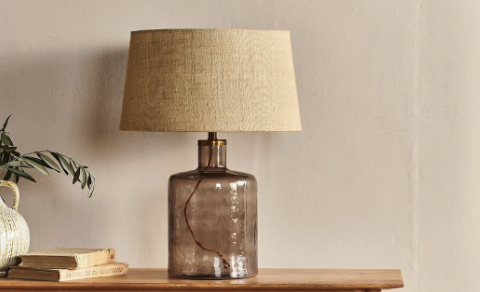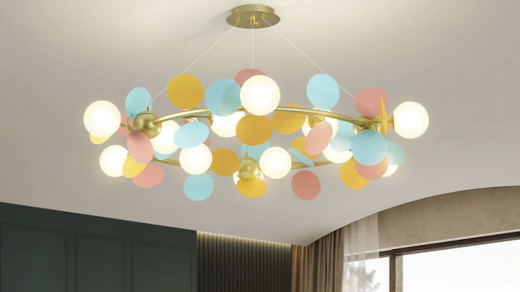Choosing the right sofa for your home is an important decision. A sofa is not only a functional piece of furniture, but it also plays a significant role in the overall aesthetic and comfort of your living space. With so many options available, it can be overwhelming to make the right choice. In this article, we will discuss various factors to consider before sofa shopping, different sofa styles, upholstery materials, cushioning choices, size considerations, color psychology, accent pillows and throws, durability and maintenance, eco-friendly options, and budgeting tips. By understanding these aspects, you can make an informed decision and find the perfect sofa for your home.
Understanding Your Space: Factors to Consider Before Sofa Shopping
Before you start shopping for a sofa, it’s important to understand your space and consider various factors that will impact your choice. First, consider the size and layout of the room where the sofa will be placed. Measure the dimensions of the room to ensure that the sofa will fit comfortably without overwhelming the space. Additionally, consider the traffic flow in the room. Will the sofa be blocking any pathways or obstructing access to other furniture? It’s important to choose a sofa that allows for easy movement within the room.
Another factor to consider is the existing decor and color scheme of your space. Take note of the colors and patterns already present in the room and choose a sofa that complements or contrasts with them. This will help create a cohesive and visually appealing look. Additionally, think about your lifestyle and how you plan to use the sofa. If you have children or pets, you may want to choose a fabric that is durable and easy to clean.
Sofa Styles Decoded: Which One Suits Your Home Best?
When it comes to sofa styles, there are numerous options to choose from. Traditional styles are characterized by their classic designs and ornate details. They often feature rolled arms, tufted backs, and decorative wood trim. On the other hand, modern styles are sleek and minimalist, with clean lines and simple designs. They often feature metal or chrome accents and may have a more modular or sectional design.
In addition to choosing between traditional and modern styles, you will also need to decide on the type of sofa that suits your needs best. Sectionals are a popular choice for larger spaces as they provide ample seating and can be configured in various ways. Loveseats are smaller sofas that typically seat two people and are ideal for smaller spaces or as additional seating in a larger room. Sleeper sofas are a great option if you frequently have guests staying overnight, as they can be easily converted into a bed.
When it comes to the arms and back of the sofa, there are various options to choose from. Rolled arms provide a classic and elegant look, while track arms offer a more modern and streamlined appearance. The back height of the sofa can also vary, with options ranging from low-profile to high-back designs. Consider your personal preferences and the overall aesthetic of your space when choosing the arm style and back height.
The legs of the sofa can also make a significant impact on the overall look of the piece. Some sofas have exposed legs made of wood or metal, while others have a skirted design that hides the legs. Consider the materials and style of the legs to ensure they match your existing decor.
Upholstery Materials: Pros and Cons of Different Fabrics
The choice of upholstery material is an important consideration when selecting a sofa. There are various options available, each with its own pros and cons. One popular choice is leather, which is known for its durability and timeless appeal. Leather sofas are easy to clean and maintain, making them a great option for households with children or pets. However, leather can be expensive and may not be as comfortable as fabric options.
Fabric sofas offer a wide range of choices in terms of colors, patterns, and textures. They are generally more affordable than leather and can be more comfortable to sit on. However, fabric sofas may be more prone to staining and require regular cleaning to maintain their appearance. It’s important to choose a fabric that is durable and easy to clean, especially if you have children or pets.
When considering fabric options, you will also need to decide between natural and synthetic fabrics. Natural fabrics such as cotton, linen, and wool are breathable and offer a soft and luxurious feel. However, they may be more prone to wrinkling and fading over time. Synthetic fabrics such as polyester and microfiber are more durable and resistant to staining, but they may not have the same luxurious feel as natural fabrics.
Consider your lifestyle, budget, and personal preferences when choosing the upholstery material for your sofa. It’s also a good idea to test out different fabrics in person to see how they feel and look in person.
Cushioning Choices: Foam, Down, or Springs?
The cushioning of a sofa plays a significant role in its comfort and support. There are various types of cushion fillings available, each with its own benefits and drawbacks. Foam cushions are a popular choice as they offer firm support and retain their shape over time. They are also low maintenance and resistant to sagging. However, foam cushions may not provide the same level of plushness as other options.
Down-filled cushions offer a luxurious and soft feel. They provide a sink-in comfort that is perfect for lounging. However, down-filled cushions require regular fluffing to maintain their shape and may not be suitable for those with allergies.
Another option is spring cushions, which use coil springs for support. These cushions offer a combination of comfort and support, with the springs providing bounce and resilience. However, spring cushions may be more prone to sagging over time.
Consider your personal preferences and the level of comfort and support you desire when choosing the cushioning for your sofa. It’s also a good idea to test out different options in person to see how they feel.
Size Matters: Picking the Right Dimensions for Your Sofa

Choosing the right size for your sofa is crucial to ensure that it fits comfortably in your space. Before you start shopping, measure the dimensions of your room and take note of any doorways or hallways that the sofa will need to pass through. This will help you determine the maximum size of the sofa that will fit in your space.
Consider how many people will be using the sofa and how you plan to use it. If you have a large family or frequently entertain guests, you may want to choose a larger sofa or a sectional that provides ample seating. On the other hand, if you have a small space or only need seating for a few people, a loveseat or smaller sofa may be more appropriate.
Scale and proportion are also important considerations when choosing the size of your sofa. A large sofa in a small room can make the space feel cramped and overwhelming, while a small sofa in a large room may look out of place. Consider the other furniture and decor in your space and choose a sofa that is proportionate to the overall design.
Color Psychology: How to Choose the Perfect Hue for Your Space
The color of your sofa can have a significant impact on the mood and atmosphere of your space. Different colors evoke different emotions and can create different visual effects. Understanding color psychology can help you choose the perfect hue for your space.
Neutral colors such as beige, gray, and white are versatile and timeless. They create a sense of calm and can easily blend with any decor style. Neutral sofas are also a great option if you like to change up your decor frequently, as they provide a blank canvas that can be easily accessorized with pillows and throws.
Bold colors such as red, blue, and green can make a statement and add a pop of color to your space. These colors can create a sense of energy and excitement. However, it’s important to consider the existing color scheme of your space and choose a color that complements or contrasts with it.
When choosing the color of your sofa, also consider your personal preferences and any trends that you may want to incorporate. Keep in mind that trends come and go, so it’s important to choose a color that you will love for years to come.
Accent Pillows and Throws: Adding Personality to Your Sofa
Accent pillows and throws are a great way to add personality and style to your sofa. They can also provide additional comfort and support. When choosing accent pillows, consider the size, shape, and texture. Mixing different sizes and shapes can create visual interest, while choosing pillows with different textures can add depth and dimension to your sofa.
When it comes to patterns and colors, there are no hard and fast rules. You can mix and match patterns and colors to create a unique and personalized look. However, it’s important to consider the overall aesthetic of your space and choose pillows that complement or contrast with the existing decor.
Throws are another great accessory for your sofa. They can add warmth and coziness, especially during colder months. Consider the material and texture of the throw to ensure that it is comfortable and matches the overall style of your space.
Durability and Maintenance: Choosing a Sofa That Lasts
When investing in a sofa, it’s important to choose one that is durable and easy to maintain. The quality of construction and materials will play a significant role in the longevity of the sofa. Look for sofas that are made with high-quality materials such as hardwood frames, reinforced corners, and sturdy upholstery.
Consider the cleaning and care instructions for the sofa before making a purchase. Some fabrics may require professional cleaning, while others can be spot cleaned or machine washed. Leather sofas may require regular conditioning to maintain their appearance.
It’s also a good idea to check the warranty and return policies of the sofa. A reputable manufacturer will offer a warranty that covers any defects or damage. Additionally, a generous return policy will give you peace of mind in case you are not satisfied with your purchase.
Eco-Friendly Options: Sustainable Sofas for a Greener Home
If you are conscious about the environment and your health, you may want to consider eco-friendly options when choosing a sofa. Sustainable sofas are made with materials and manufacturing processes that have a minimal impact on the environment. Look for sofas that are made with certified sustainable wood frames, natural or organic fabrics, and non-toxic adhesives and finishes.
There are various certifications and standards to look for when choosing an eco-friendly sofa. The Forest Stewardship Council (FSC) certification ensures that the wood used in the sofa is sourced from responsibly managed forests. The Global Organic Textile Standard (GOTS) certification ensures that the fabric used in the sofa is made from organic fibers and produced using environmentally friendly processes.
Choosing an eco-friendly sofa not only benefits the environment but also your health. Many conventional sofas are made with materials that contain harmful chemicals such as flame retardants and formaldehyde. These chemicals can off-gas and contribute to indoor air pollution. By choosing an eco-friendly sofa, you can create a healthier home environment for you and your family.
Budgeting for Your Sofa: Finding the Right Balance Between Quality and Cost
When it comes to buying a sofa, it’s important to set a realistic budget. Sofas can vary significantly in price, depending on factors such as the size, style, upholstery material, and brand. It’s important to find the right balance between quality and cost.
While it may be tempting to go for the cheapest option, keep in mind that a sofa is an investment in your home and comfort. A cheaply made sofa may not last as long and may require frequent repairs or replacement. On the other hand, an expensive designer sofa may not be within your budget.
Compare prices and features of different sofas to find the best value for your money. Consider the quality of construction and materials, as well as the reputation of the manufacturer. It’s also a good idea to read reviews from other customers to get an idea of the durability and comfort of the sofa.
Remember that a sofa is a piece of furniture that you will be using every day, so it’s worth investing in a quality piece that will last.
Choosing the right sofa for your home is an important decision that requires careful consideration. By understanding your space, considering different styles, upholstery materials, cushioning choices, size considerations, color psychology, accent pillows and throws, durability and maintenance, eco-friendly options, and budgeting tips, you can make an informed decision and find the perfect sofa for your home. Take your time, do your research, and test out different options before making a purchase. Remember that a sofa is an investment in your home and comfort, so it’s worth taking the time to find the perfect one.




